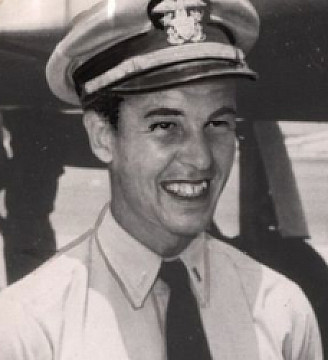Alfred Gwynne Vanderbilt, Jr. (1912-1999)
of New York City & Mill Neck, Long Island
He was born in London and was educated at St. Paul's School, N.H., and Yale. He never pursued a conventional career but dedicated himself to breeding, owning, and racing thoroughbred horses. Having been bitten by the equine bug when he was 9, when he turned 21 his mother gave him the 600-acre Sagamore Farm in Maryland.
His most famous horse was Native Dancer who won 21 of her 22 races and he was the leading money-winning owner in America in 1935 and 1953. As President of the Belmont Park and Pimlico race tracks, he pioneered the use of the starting gate and the photo finish, and reinvigorated interest in the Preakness Stakes. He was President of the Westchester Racing Association before the New York Racing Association was incorporated, serving four years as its Chairman. In the 1970s, he was chief executive of the Belmont, Aqueduct and Saratoga racetracks. As a member of the Jockey Club, on four separate occasions he was voted as, "the man who did the most for racing". By the 1990s, Vanderbilt lamented the direction in which the sport was going: "Horse racing once was a contest, a sport. The only thing that's important now is the betting, the revenue".
During World War II, he captained a patrol torpedo boat with the U.S. Navy. His obituary in The New York Times stated that, "he had wide-ranging artistic interests, initially acquired through his mother's circle of artistic and theatrical friends; his own intimate friends included George Abbott, Hal Prince and Fred Astaire. He shot lions with Ernest Hemingway and loved music so much that every summer before the Saratoga race season began he and his third wife (Jean Harvey) would jet out to the music festival in Aspen, Colorado. He also loved to travel and on one occasion in the 1950s - with Jean, Hal and Judy Prince - stayed on Mrs Joan Whitney Payson's yacht in the Greek Islands before shocking security guards on his arrival at Moscow airport. Despite being an arch-nemesis capitalist, he and Jean were given the Lenin suite at their hotel off Red Square. He was married three times (each ending in divorce) and was survived by five of his six children.
His most famous horse was Native Dancer who won 21 of her 22 races and he was the leading money-winning owner in America in 1935 and 1953. As President of the Belmont Park and Pimlico race tracks, he pioneered the use of the starting gate and the photo finish, and reinvigorated interest in the Preakness Stakes. He was President of the Westchester Racing Association before the New York Racing Association was incorporated, serving four years as its Chairman. In the 1970s, he was chief executive of the Belmont, Aqueduct and Saratoga racetracks. As a member of the Jockey Club, on four separate occasions he was voted as, "the man who did the most for racing". By the 1990s, Vanderbilt lamented the direction in which the sport was going: "Horse racing once was a contest, a sport. The only thing that's important now is the betting, the revenue".
During World War II, he captained a patrol torpedo boat with the U.S. Navy. His obituary in The New York Times stated that, "he had wide-ranging artistic interests, initially acquired through his mother's circle of artistic and theatrical friends; his own intimate friends included George Abbott, Hal Prince and Fred Astaire. He shot lions with Ernest Hemingway and loved music so much that every summer before the Saratoga race season began he and his third wife (Jean Harvey) would jet out to the music festival in Aspen, Colorado. He also loved to travel and on one occasion in the 1950s - with Jean, Hal and Judy Prince - stayed on Mrs Joan Whitney Payson's yacht in the Greek Islands before shocking security guards on his arrival at Moscow airport. Despite being an arch-nemesis capitalist, he and Jean were given the Lenin suite at their hotel off Red Square. He was married three times (each ending in divorce) and was survived by five of his six children.










